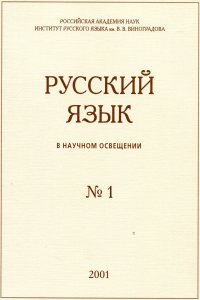On reflexes of the Injunctive in Old Russian literary sources
Abstract:
One of the important features of the Old Russian written sources is variability of the third person singular and plural endings in the Present-Future tense with and without -ть (of the type гаснеть ~ гасне, суть ~ су). It may be explained as the inheritance of Indo-European ti- and t-forms related to the opposition of the Indicative and the Injunctive. At the same time the Slavonic Present Indicative takes the functions of the Indo-European Conjunctive. The variability cannot be explained by confusion of the primary and secondary endings because it is stable and is determined by functional parameters. It is demonstrated that the t-forms appear in Old Russian in multipredicative groups with morphologically homogeneous and functionally correlated predicates.


